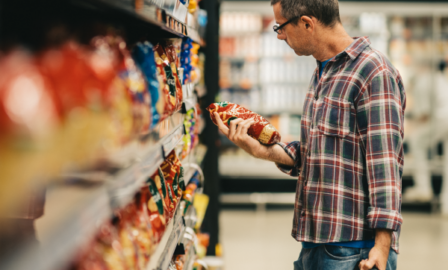Trends in Frozen Food
Frozen food is making a comeback. Despite a drop in demand in the late 2000s and early 2010s, all signs now point to a recovering segment with frozen entrees capturing nearly $1 billion in sales last year. This is great news for frozen food manufacturers who see nearly 2x margins for frozen entrees compared to those for fresh items and for retailers who see frozen entrees as an opportunity to drive foot traffic into the center of the store.
This growth isn’t happening by chance. While meal kits generated a lot of buzz (and investment) in the early 2010s, their novelty has worn off giving frozen entrees the chance to reclaim their title as the original meal kit. In order to capture current and future opportunities, manufacturers need to consider what is driving this growth and how consumer tastes and lives are changing to impact frozen food trends.
Frozen Food Trends Prioritize Convenience
Millennial parents with young children have become a core market segment for frozen entrees, appreciating the convenience that they offer. This is great news for brands who are looking to cement loyalty and build long-term relationships with their consumers. Having grown up in an era of instant gratification, it’s appropriate that millennials now seek convenient options as they move into a new life stage. As more millennials make this shift into parenthood, demand for convenience will only continue to grow.
Showing how frozen entrees can easily fit into a busy lifestyle will speak to the many consumers that value convenience over anything else. By removing the hassle of preparation while still offering a delicious meal, frozen entrees have the opportunity to be a mealtime hero.
Healthy and Organic Options
As an extension of the wellness and sustainability trends that have taken over consumer shopping habits, increased demand for healthy and nutritious products have crept into the freezer aisle. Plant-based and gluten-free products have exploded in popularity, with the market value for plant-based products hitting $4.5 billion, an 11% increase over the past year. These trends are heating up the frozen category; when ConAgra acquired Pinnacle Foods in 2018, they strategically added the vegan brand Gardein and the gluten-free brand Udi’s to their portfolio.
Organic options have also been gaining market share recently. Last year, the average household spent 14 percent more on organic products than in the previous year. Privately-owned, organic label Amy’s Kitchen is worth $500 million today and recently announced plans to open a large manufacturing facility in New York state.
These innovations are particularly important to low-frequency consumers who tend to view frozen foods as unhealthy and overly processed. They do, however, respond well to sales promotions and health-focused improvements, with 35% saying better-for-you innovation would lead them to try an offering they never had before.
Keeping in mind consumer’s preference for wellness and sustainability will help brands better position themselves. While consumers are beginning to understand that frozen food is just as nutritious as fresh food, brands can further this understanding by leaning into healthy messaging and offering items that meet the needs of a variety of diets.
Diverse and Inspired Meal Options
Consumer wanderlust extends into their shopping cart. Millennials have become frozen’s core consumer and their impulsive and adventurous approach to eating means they’re looking to try new things. With 32% of them consuming frozen food more than once a week, brands must go beyond the traditional TV dinner and offer a variety of interesting and high-quality options. High-frequency consumers respond well to innovations that bring new flavors to their tables.
More and more mainstream brands are coming to this realization. Recently, Nestlé backed the creation of Wildscape, a high-end, healthy eating concept with stylish packaging and flavors that mimic trends found in up-and-coming eateries such as turmeric barley, avocado verde sauce, sorghum grains, and black garlic miso.
Ethnic options are also becoming more popular with consumers. Among the 87 percent of Americans who say they like ethnic food, about a third eat it once a week, and another third said they would pay more for authentic cuisine. As more audiences become familiar with ethnic and ethnically-inspired foods, frozen food manufacturers will have the opportunity to partner with qualified creators to deliver flavors from all over the world to their audiences.


